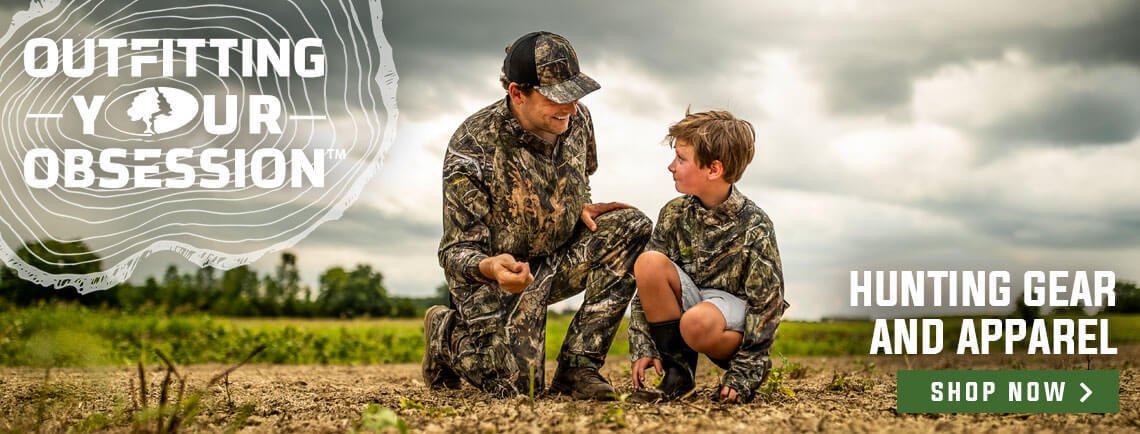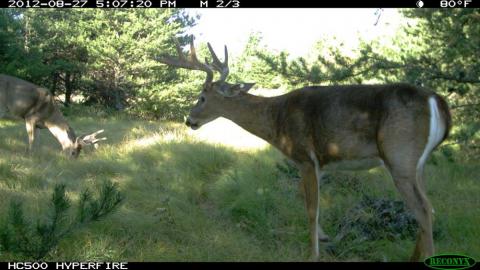Provided by John E. Phillips
For most of us who love the outdoors, fishing is our recreation. However, for four-time Bassmaster Classic Champion, Kevin VanDam of Kalamazoo, Michigan, and one of the winningest professional anglers in the history of the sport, bass fishing is his vocation. But when VanDam doesn’t have a rod and reel in his hand, chunking, winding and competing to win $100,000 or more, he loves to get on his tractor or pick up his chainsaw and improve his 325-acre farm for wildlife. The satisfaction VanDam gets from being a GameKeeper is that he shares his love of the land and the critters that live there with his twin boys, Jackson and Nicholas, and his brother-in-law Russ Campbell. VanDam and his family like to raise older, bigger and more white-tailed deer and wild turkeys for themselves. They also share their land’s bounty with friends and family. Mossy Oak wanted to dig deeper into the hunting side of Kevin VanDam.
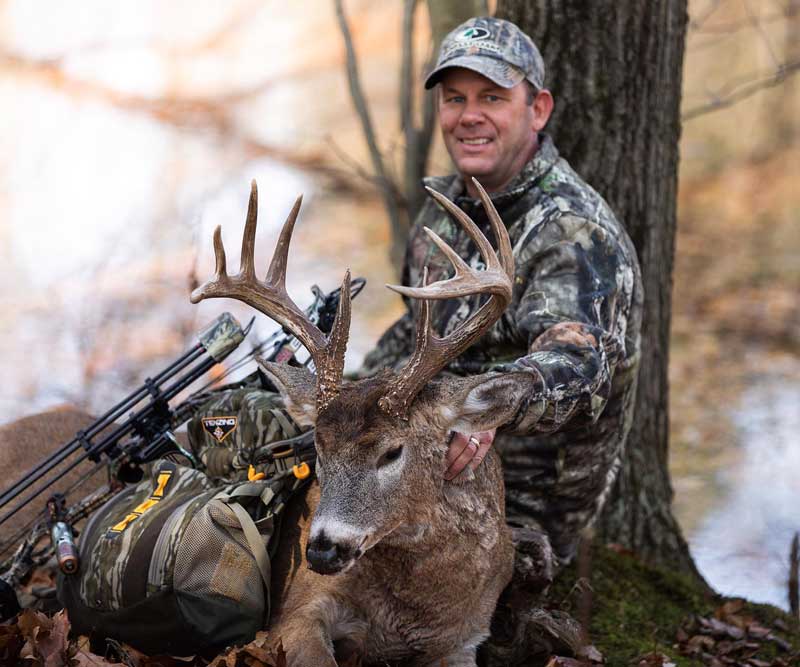
Managing Land for Wildlife Is a Year-Round Family Affair for Kevin VanDam
When I am not on the road fishing, I love to spend time with my two sons, 24-year-old Jackson and Nicholas. They have grown up learning to be GameKeepers, hunters and anglers and spending as much time as they can with their dad. All three of us enjoy spending time on our family’s property, which is actually two different pieces of land. For us, doing wildlife management and improving the habitat for wildlife is a year-round project. If any of us has time to spend, he goes to the land and works on improving it. We are building and planting food plots, hinge cutting non-commercial trees to provide bedding sites for deer, running trail cameras and rotating crops to ensure that we have plenty of food for the deer and turkeys on our property. Before the season, we also go out and check all our stands to make sure they’re safe and in good condition for hunting. We plant nut and fruit trees for wildlife too and maximize our timber rotations to always provide thick bedding sites and plenty of cover to hold deer and turkeys. We plant small, select clear-cuts to make sure the deer have sanctuaries all year long.
From reading “GameKeeper Magazine,” we have learned that the three most critical keys to holding deer on our property are providing plenty of food, cover and water and having low hunting pressure. Our clear-cuts are also designed to provide plenty of nesting sites for our wild turkeys. When we first started managing this land, we focused our management strictly on deer. As we’ve gotten deeper and deeper in learning about better ways to manage our deer herd, we’ve also learned what wild turkeys need to be able to stay on our property all year long and raise their poults. This year, in 2021, our turkey population is the best it ever has been. We’ve done everything we can to give our turkeys a safe place to live. We do intense predator control. We really put a whipping on the coons and possums that destroy turkey nests and eat the turkey eggs. Our planting regime includes spring plantings and fall plantings for wildlife. We want to have good food available all year long for our deer and turkeys, but also to pull deer and turkeys onto our land from other properties.
My number-one planting for both deer and turkey all season long is Mossy Oak BioLogic Clover Plus. I think clover is the most efficient planting we do to have year-round food for both deer and turkeys. In Michigan, we notice that even when there’s snow on the ground, the deer will paw through the snow to get to the green clover underneath. The clover also is the first crop that comes up in the early spring when: the does need more nutrition for the fawns they’re carrying; the bucks need added nutrition to recover from the rut and to grow antlers; and turkeys need to start eating green food. The turkeys feed in those clover patches all the way through to the fall. I do not believe you can get more highly nutritious foliage for wildlife for a longer time than we get from our clover. We’re good friends with the Drurys. When I first talked to Mark Drury about what he was planting, he told me that Clover Plus was what I should be planting. He explained that his family had used BioLogic’s Clover and Clover Plus extensively for many years. Today these products are the best foundation for the nutrition in our wildlife plantings, because turkeys and deer can feed in those clover patches all year long. There’s never a time during the year that the deer and turkeys aren’t feeding on our clover green fields.
I have about seven acres of wildlife plantings and green fields. Some of my green fields are only about 1/4-acre green fields and 1/2-acre green fields, and we’ve discovered that these small green fields planted in the woods produce some of our best hunting sites for deer and turkeys. Another advantage to planting the clover is that deer don’t overbrowse the clover like they’ll often do when you plant cereal grains. Where our farms are located, we have a dense deer population. I usually plant my clover in the fall because we can better control the weeds then. I know in other areas around the nation, some landowners prefer to plant their clover in the spring.
Being a GameKeeper Has Paid Off for Kevin VanDam and His Family
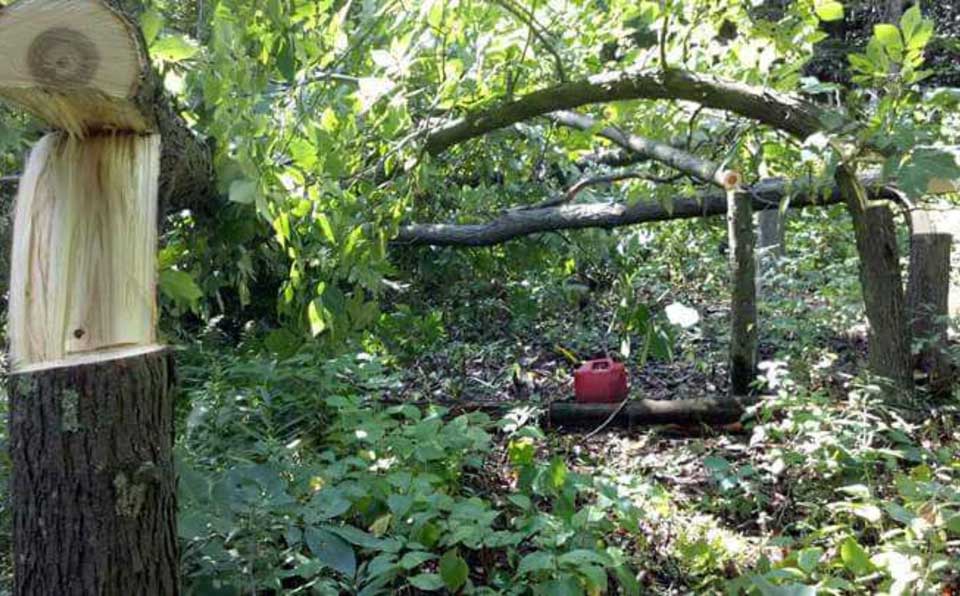
I started my boys hunting as soon as they were legally old enough to hunt in Michigan. By the time Jackson and Nicholas were 10 years old, they already had harvested their first deer and turkeys. Ten years old was the age when the State of Michigan allowed young hunters to go through a Hunter Safety Program to get their hunting licenses. I’ve learned that young people are all about action. They don’t want to sit on a stand all day long and not see any game. Over the years, hunting with me and other family members, my boys haven’t only learned to hunt, but have learned to enjoy everything there is to see and do in the outdoors. They’ve learned how to be able to see more game by manipulating the habitat and providing food for the wildlife.
Early in their hunting careers, like every other young hunter, they wanted to shoot every buck they saw. I never told them, “No, you can‘t.” However, I told them that each buck they harvested had to be bigger than any other buck they had ever taken. Over the years, as they grew up, they learned that if they wanted to take bigger deer or a special buck, they had to let the little bucks pass to become old enough to be bigger than the bucks they had been taking. They also learned that deer hunting wasn’t just about the bucks; we had to manage all the deer and turkeys on our property to make sure that the young bucks had plenty of food, and we needed to keep our herd in balance to work toward a one-buck to one-doe ratio.
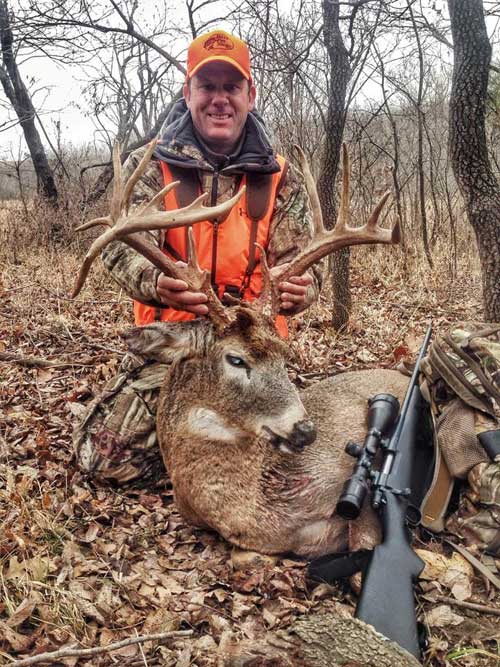
My twins understand that if they want to take big bucks, they have to let the young bucks go and also work to harvest the does. Today, they are GameKeepers themselves and really enjoy the process of manipulating the habitat, harvesting a certain number of does every year and letting certain deer walk. They have even come to the realization that they have to work all year long to have the best hunting we can have on our two farms. They do much of the tractor, chain saw and maintenance work that’s all a part of the stewardship of the land and the ability to produce more and bigger animals each year. All of my family invests a lot of hours managing our property for wildlife. I think the anticipation of hunting season builds and builds, as we see the bucks growing their antlers throughout the late spring and summer and recognize how and why all the management we do on our lands produces older bucks and more turkeys each year than we’ve had in past years.
A few years ago, we had a nice buck show up on some of our trail cameras. This deer was our number-one, hit-list buck that year. On opening day of bow season, this buck walked right under my son Nicholas’ tree stand. He had an easy shot to take that buck, but Nicholas would not. The buck had been fighting and had broken off two of his antlers. As bad as all of us wanted to take that buck, Nicholas let that deer pass as we all did that season. The following year, the buck had put on more weight and bigger antlers, and Nicholas took the buck he’d passed up the year before. I was excited that Nicholas had been patient enough and understood what that buck could be, if he didn’t take him with broken antlers. Nicholas and I were both rewarded because we had watched that buck for several years on the trail cameras. This is a classic example of waiting on a buck to reach his maximum potential and what being a GameKeeper means.
How Kevin VanDam Manages Land and Wildlife While He’s Fishing Professionally
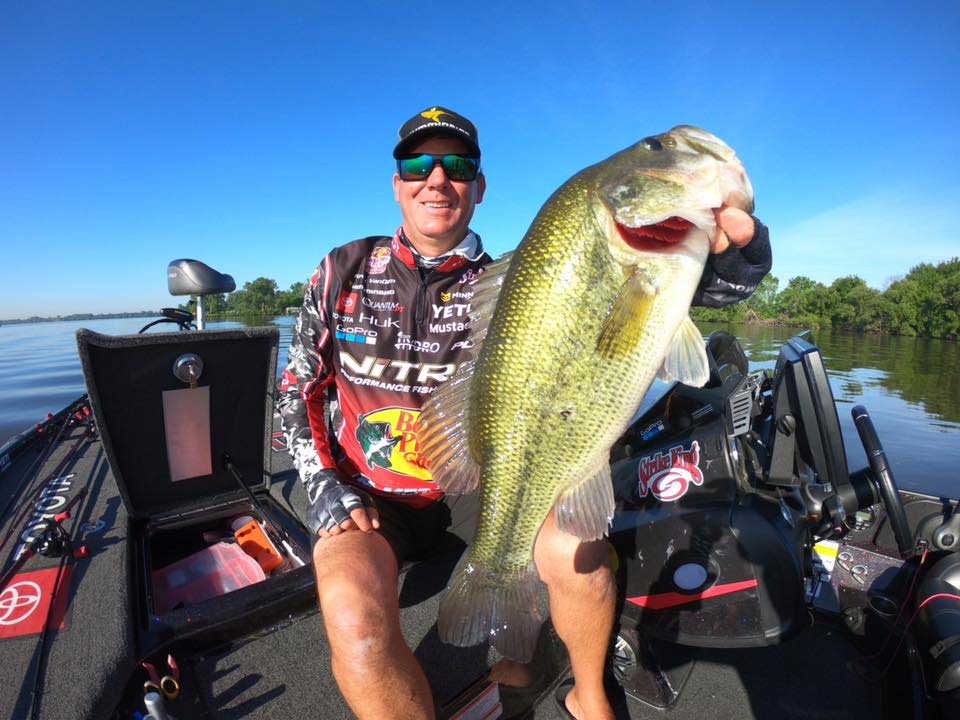
I’m often asked, “How do you have time to improve habitat, plant green fields, hinge cut trees and rotate your crops for wildlife all year long, since your competitive fishing season begins in the early spring and usually ends in January and February?” Besides fishing tournaments and managing my land, I still have to do a lot of promotional work for my sponsors during the fall. My only real time off from my work is right around Christmas and New Year’s. Besides my two sons, my brother-in-law Russ Campbell has grown up close to where my family is, and he and I hunt together often. We have a lease in Kansas, and he’s gone with me to Texas to hunt. He works with the boys while I’m gone to do all the things required to manage our property for wildlife the best we can.
Since the boys have learned how important managing the land is, they do a lot of the work managing the property when I am out of town. My son Jackson has moved away from home now and is working in Nashville, Tennessee, as a chef at E3 Chophouse Restaurant. Luke Bryan, Jason Aldean and Adam LaRoche own E3. Jackson loves Nashville, and he’s being mentored by the head chef there. Although he’ll be home for deer season, we’re going to miss him and the time he puts in to help manage our land. Nicholas is still at home, and he puts in quite a few hours on the land.
Becoming a Mossy Oak Pro and a GameKeeper
Beginning Hunting
I began hunting with my dad and my younger brother at a young age. We primarily hunted rabbits and pheasants back then. Since we didn’t have a bird dog or a beagle, I was nominated to be the dog. They’d send me into the weeds and the bushes to flush pheasants and jump rabbits for them to shoot. Then I started bowhunting when I was 10, and I’ve always loved the outdoors and getting to hunt and fish. Back then, 40-years ago, a good friend and I worked together to plant food plots. Many people don’t know about my hunting background, but when I’m not fishing, I’m most often hunting. Having a job in the fishing industry is great and allows for my recreation to be hunting, usually with my family, when I’m not fishing.
Mossy Oak Family
Then when I had the opportunity to work with Mossy Oak and become a Mossy Oak Pro, I thought nothing could be better. I was approached by Chris Paradise who works for Mossy Oak. Next I met Toxey Haas and his family, Ronnie “Cuz” Strickland, Bill Sugg and the rest of the Mossy Oak family, I instantly recognized that the Mossy Oak folks and I had the same values. The Mossy Oak people were and still are all about family - relatives and the families of the people who work for and are associated with Mossy Oak. I really liked all the company’s conservation programs and products and the education that was made available for having more, bigger, and better wildlife through the GameKeeper’s program. I learned as I began to get to know more Mossy Oak folks that managing wildlife and providing better habitat for wildlife was more important to them than harvesting wildlife. That was how I evolved as well.
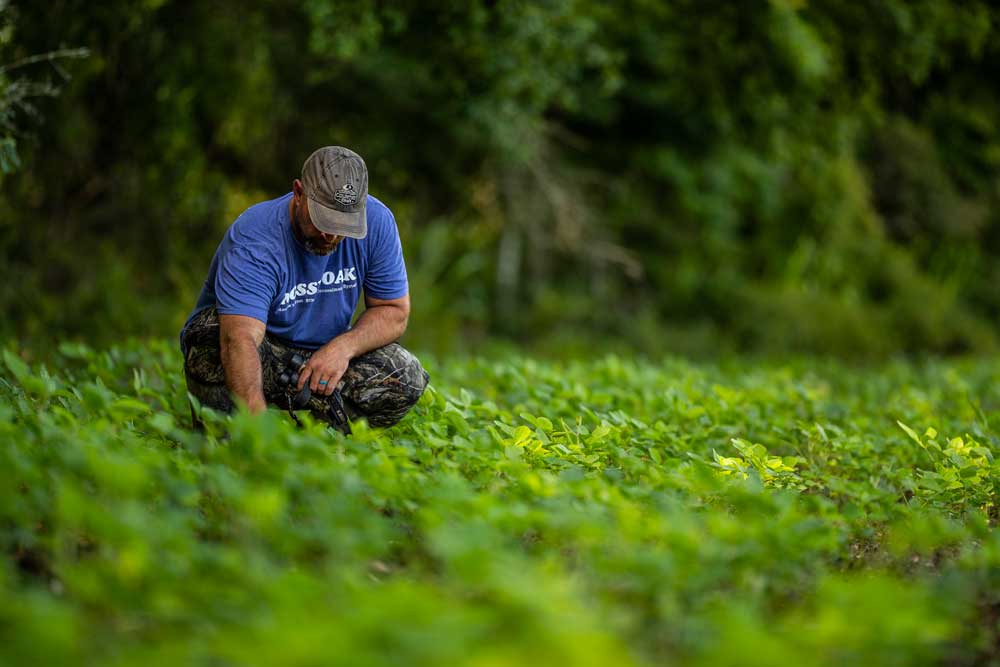
My Direction and My Neighbors’ Directions Have Changed in the Outdoors
When I’ve been asked whether I enjoy raising wildlife or harvesting wildlife the most, I have had to admit that I enjoy increasing the wildlife on my property with my family and that’s brought me a whole lot more than squeezing the trigger on a turkey.
Early in my outdoor career, I was always fired up trying to take unlimited ducks and shoot a big buck every season. All my hunting was focused on having a successful hunt, and that’s how I measured a successful hunt - by the amount or the size of the game we took. As I got older and learned more about farming for wildlife, I realized I could have a very successful hunt without squeezing the trigger.
I really enjoy seeing the benefits of wildlife and hunting that’s being created from the work we put in on the lands we hunt, by being able to see young bucks grow into older bucks and become mature bucks and by seeing more turkeys on our land each year than we’ve ever had in past years.
Managing wildlife was not always wine and roses; we had some thorny times in years past during our wildlife-management programs too. We had a big bout of EHD one time that really set our deer herd back. We learned that when trying to manage wildlife, Mother Nature wasn’t always kind. However, the management practices we used and continued to use allowed our deer herd to rebound, and every year our turkey population grew.
Many people may not realize how much game you can harvest off 300-plus acres, but we usually harvest about 1/2-dozen longbeard gobblers each season. This past year, 2020, we took four nice bucks and quite a few does off our property. Another benefit that we’ve discovered is as we’ve increased the carrying capacity of our land, we’ve increased our share of wildlife with other people. We’ve brought in countless family members and friends who never may have hunted before. Many of those family and friends have taken their first deer on our property. For us, that is a special benefit from all the blood, sweat, tears and money we’ve put into our wildlife-management program.
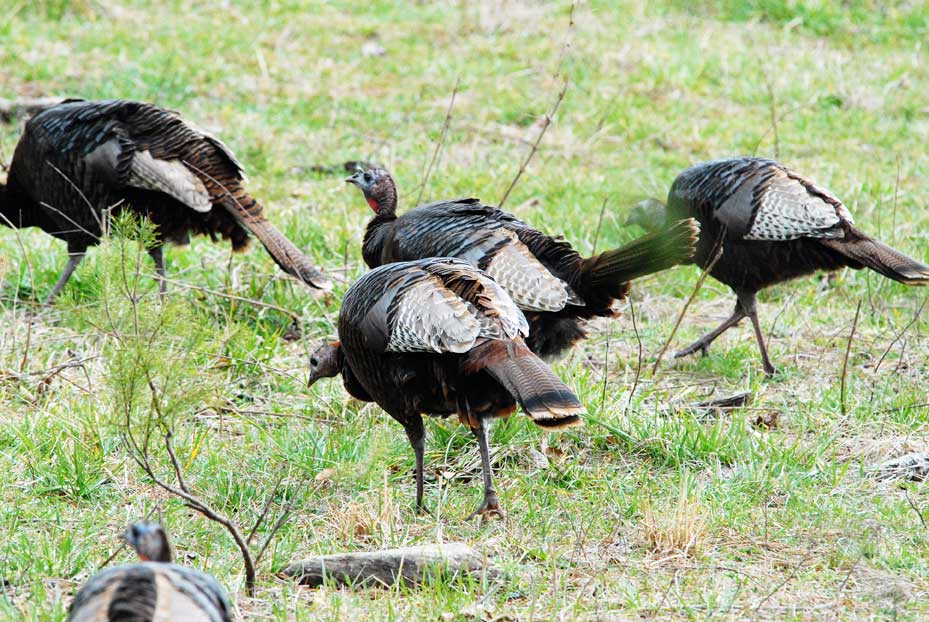
What I have really enjoyed is taking out first-time hunters and letting them see and understand what hunting is. We’re able to take these folks and show and tell them why we manage the land the way that we do. Then I will sit in the blind with them, and when they may see a good buck and want to shoot, I will explain that that buck is a yearling or a 2-1/2-year-old buck, and that we are trying to manage our land to take 4 to 5-year-old bucks. When they see the difference in the buck they can take versus what they may have taken without the management and plantings we do, they begin to understand why we manage our deer herd the way we do. I think sharing our land and our wildlife with other people and being able to explain to them what we’re doing with our land, why we do it, and what results we see and that they can see as well is cool.
This is something else we have been excited about; our surrounding neighbors have started managing their deer and turkeys the same way we do. We share trail-camera pictures with our neighbors, and we talk and discuss with them how and why we’re managing our deer herd to take older-age-class bucks. We help each other out when we have big projects like cutting timber, planting green fields, repairing roads and/or building a bridge over a ditch. I have some really great neighbors who use property management that results in better wildlife for all of us to take. We started a Quality Deer Management Program in our area, and many of our neighbors and friends have joined that initiative and are seeing positive results.
My brother Randy has a good-sized retail store, D&R Sports Center in Kalamazoo, Michigan, that sells boats, guns, archery equipment and everything related to the outdoors. We are an outdoor family and have been an outdoor family for as long as we can remember. My brother and his family are using the same game-management system and products we use. I think over the last 10 years, planting food plots and doing habitat enhancements have become a major focus of landowners, especially in our area. The people in our region are now beginning to see and understand that they can grow big deer and increase their turkey flocks - even on small properties - by spending a little time and money improving the habitat and the food availability and protecting the young deer and turkeys until they grow to maturity. They can have better hunting and more and bigger critters. We have landowners with only 20 acres, and some with 100 acres or more. But they’re all learning the benefits that being a GameKeeper can provide. Like us, they have seen that you cannot harvest a big buck if you don’t let the little bucks walk. When a large group of landowners all agree to that philosophy, each of them has an opportunity to take a large buck, regardless of the size of the property they own.
My favorite magazine by far is the “GameKeeper Magazine.” I look forward to every issue that comes out, and even as long as I’ve been a GameKeeper, I still enjoy seeing how other people manage their lands and what new techniques are being learned each year that helps me do a better job of managing my land. I’ve definitely learned a lot being a GameKeeper.
Learning How to Better Manage Land for Wildlife
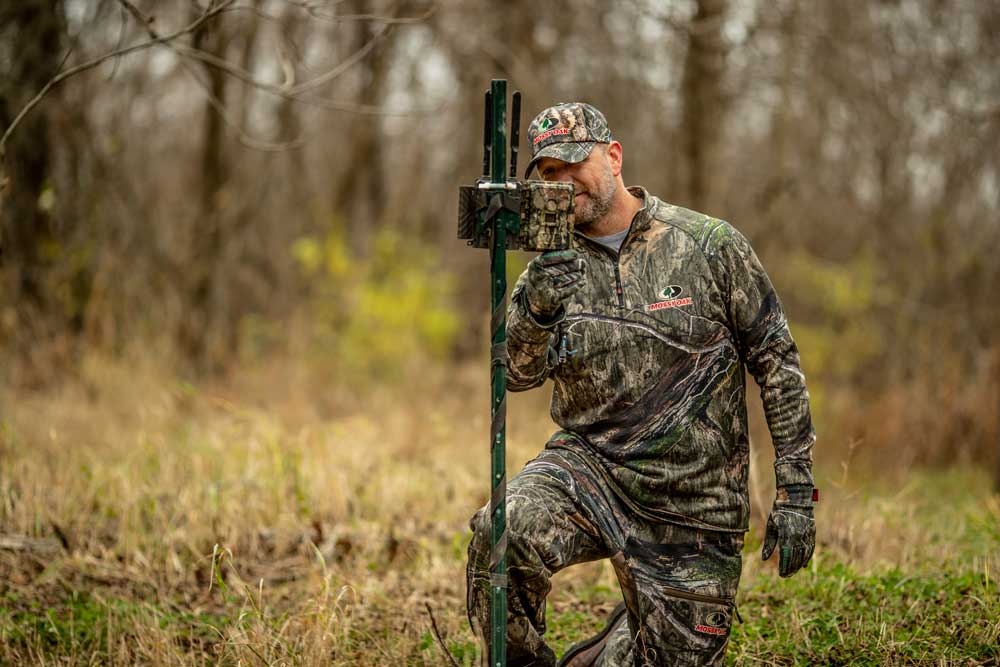
Trail Cameras
I have used quite a few different trail cameras over the years, but this year marks the first time that I’ve had trail cameras that will send pictures to my cell phone. I have the new Spartan GoLive cameras that allow you to click on whichever camera you want to look through and view a livestream of what that camera is seeing. The cameras also take photos. I’ve used trail cameras for years, and when I pull the SD cards, I always have the day and time stamped on them to let me know when the picture was taken. However, now, I also get a notification when any one of my cameras takes a picture. I can instantly go to that camera via the internet to see and learn what the weather conditions have been at that camera, and how weather changes affect deer movement on the land I hunt. With that information, I’ve been able to identify and learn what impacts weather changes, moon phases and wind direction have on deer movement.
Another advantage I have with these cameras is that when I see a picture of a big deer on my cell phone, I can click on that picture. Within about 15 seconds, I can see a livestream of that deer in front of the camera. So far, I haven’t seen any true monster bucks this year, but I’ve already got quite a few pictures of a good number of nice bucks on our properties from these cameras. Our rut here in Michigan, usually occurs in mid-November. I’ll be able to see bucks moving out of their summer patterns, working scrapes and coming to our green fields and the food we have for the deer.
What I’ve learned over the years in working with trail cameras is, because we’ve improved the habitat and increased the amount and variety of food the deer have to feed on, we attract deer from other properties that come onto our lands to feed, bed and find does during the rut. Besides offering ample food, we also do a lot of logging on the property we hunt, which results in plenty of cover for deer sanctuaries where deer can bed. If you really want to have a good population of deer, and especially older-class deer, I believe that some of the most important elements are having thick-cover sanctuaries that help to hold deer on your property and heavy cover close to food and water and monitoring the hunting pressure. With all of those elements, you can raise and hold big bucks even on small properties.
I currently have about eight of those new Spartan GoLive cameras, my brother-in-law has six trail cameras, and then I have about six other older trail cameras I use. I found out about these Spartan cameras from some friends of mine who had these cameras and were really happy with them. I think I’m not much different from a lot of other deer hunters in that I learn a lot about new products by word of mouth from friends who have tested new products and can give me reports on why they like certain equipment. That is another reason that I like “GameKeeper Magazine.” Landowners, hunting clubs and individuals who are trying to improve their lands for wildlife come up with not only new techniques and tactics for producing more, bigger and older birds and animals, but many of them will test new products as soon as they come on the market. They will report on how effective that new product is to help them manage their game and harvest older and more mature deer and turkeys, waterfowl, upland birds or whatever they’re hunting.
Property Enhancement by Hinge Cutting and Providing Places for Turkey Nesting
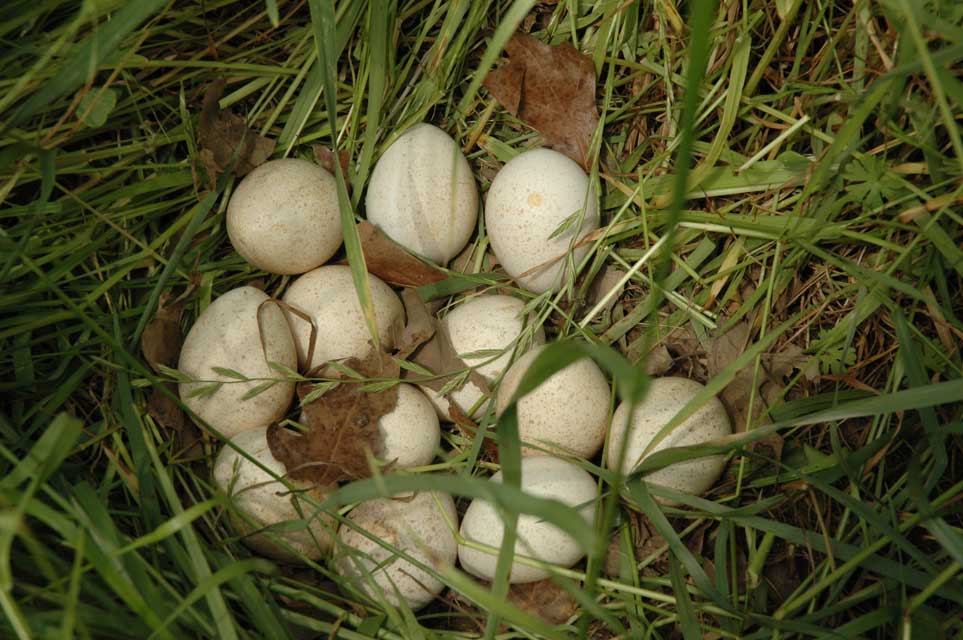
I’ve learned that the information you get from “GameKeeper Magazine” is information you can bet on and take to the bank. For instance, when I first learned about hinge cutting non-commercial trees to create bedding sites for deer, I tried it, and it worked. Once I learned about enhancing my property for turkey nesting, I tried it, and it worked. We now have more turkeys than we’ve ever had on our property. I know the information that I learn from “GameKeeper Magazine” is true because all of us who subscribe want to help each other maximize our wildlife production on our property and manage that wildlife to produce better animals and birds to hunt. Then, we share with our friends and neighbors what we learn, which means many of the landowners around us are starting to manage their properties the way we manage ours. The result has been all of the landowners around the land we hunt are seeing and taking more, bigger and older-age-class bucks every year.
Looking at the Results of Managing Land and Wildlife
Increased Numbers and Sizes of Deer and Turkeys
When we first bought this property, we had a fair number of deer and turkey on these 325 acres. Since we have been managing the land, we have many more turkeys than we had when we bought the property. About the same number of deer live on the property now as we had when we initially bought this land; however, we have many more older-age-class bucks than we had on the land when we first purchased it. We also have a much better buck-to-doe ratio than the land had when it was purchased. Today, we have a closer one-to-one buck-to-doe ratio than we’ve ever had.
We take as many does as we possibly can not only on our property, but with our friend group of neighbors who surround our property. Counting friends and neighbors, we took 30 bucks and does from the properties in the area we hunt, but primarily does. On our land, we know for sure that we took 10 does between family members and guests who hunted with us and four mature bucks. The youngest buck we took was 3.5 years old, and the oldest buck was 4.5 or perhaps 5.5 years old. We also took six gobblers off the property in the 2021 turkey season. Before and after the 2021 turkey season, I would see 75 to 100 turkeys on our property, which I believed to be a huge number of turkeys using 300-plus acres.
The Impact of Predator Control
One of the management tools that we are using to increase our turkey population is predator control. Our primary targets are coons and possums. Because of fur prices being so low, fewer and fewer people are harvesting predators, and even fewer individuals are learning how to trap them. The coons and the possums don’t seem to have any natural predators in our area. We also have quite a bit of water on our property, including creeks that run through it and springs that bring water to the surface. We’ve learned that fresh water is really beneficial to wildlife. However, water also is very attractive habitat for coons. We took 37 coons and possums off of our property during the 2020-2021 hunting season.
Right now, going into deer season, I’ve got pictures of coyotes on just about every one of our trail cameras. My nephew, Jonathon VanDam, is very much into hunting predators at night. We use night vision and thermal optics to hunt the coyotes. We have found that using these two types of optics at night seems to be the most effective way to at least control the number of coyotes on our land. I used to trap for coons, possums, foxes and other critters, but when you trap for coyotes, that is a very intensive type of trapping and very time consuming. I just haven’t had the time to do it myself. The advantage to trapping coyotes though, as opposed to only depending on calling and shooting coyotes, is that traps are working for a landowner 24 hours a day, 7 days a week. Last year, my nephew and his brother-in-law harvested between 50 and 75 coyotes. But, they hunted a lot of property besides just ours. We did learn that trapping is the most effective way to rid your land of coyotes.
The Future
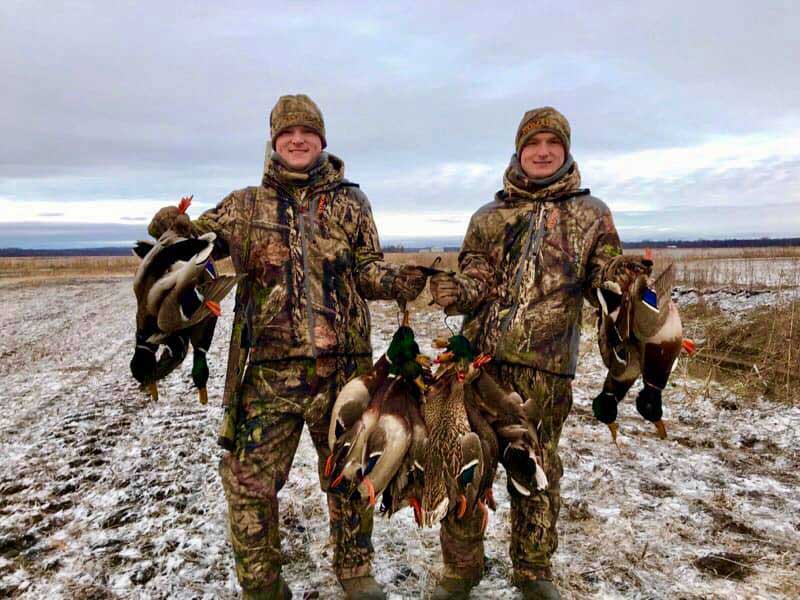
I think for me, the ultimate excitement, point of pride and sense of accomplishment comes when I raise and protect a big buck on my property for several years, he moves into that older-age-class, and then one of my sons takes that big deer. Both my sons, Jackson and Nicholas, have taken some nice deer from our property. I’m the proudest to know that they’ve worked with me on the land to create the habitat and the food sources and have watched bucks grow until they are mature enough for them to try to take them. I really haven’t harvested that many big bucks on the land we manage. I just don’t get time to hunt as much in the fall and winter as I’d like to hunt. However, in the 2020 season, I did harvest a very nice buck – a 145-inch 10-pointer – with my bow. That is a good-sized buck for where I live. We don’t have a huge tract of land, and there’s quite a bit of deer hunting pressure in our area. So, growing a buck that will score 150 or better on Pope & Young (P&Y) is hard. To raise a buck until he’s 5, 6 or 7 years old where we live is almost impossible. Deer hunting not only has a long history in the State of Michigan; it is a very popular outdoor sport for folks in Michigan.
There is always something we can do to improve the land and improve the wildlife that lives there. One of the things we’re working on is our timber rotation. We’re on a 7-year rotation to harvest timber, do a controlled burn and then replant the land for timber. We’re also constantly working on creating edge cover for our turkey hens and their poults. The deer like to browse along those edges, too.
From year to year, we keep our food plots in good shape. In the spring, we’ll plant soybeans, corn and cereal grains on our bigger destination plots. Then we have smaller plots in the woods where we plant Mossy Oak BioLogic Clover Plus and a lot of brassicas also. We have had great success with the Mossy Oak Winter Bulbs and Sugar Beets. That type of planting draws deer to our property from the time it comes up in the fall, until the roots are totally consumed during the winter months and on into March and April. We also rotate which crops we plant where, and we try not to plant the same crop in any one place for two consecutive years.

